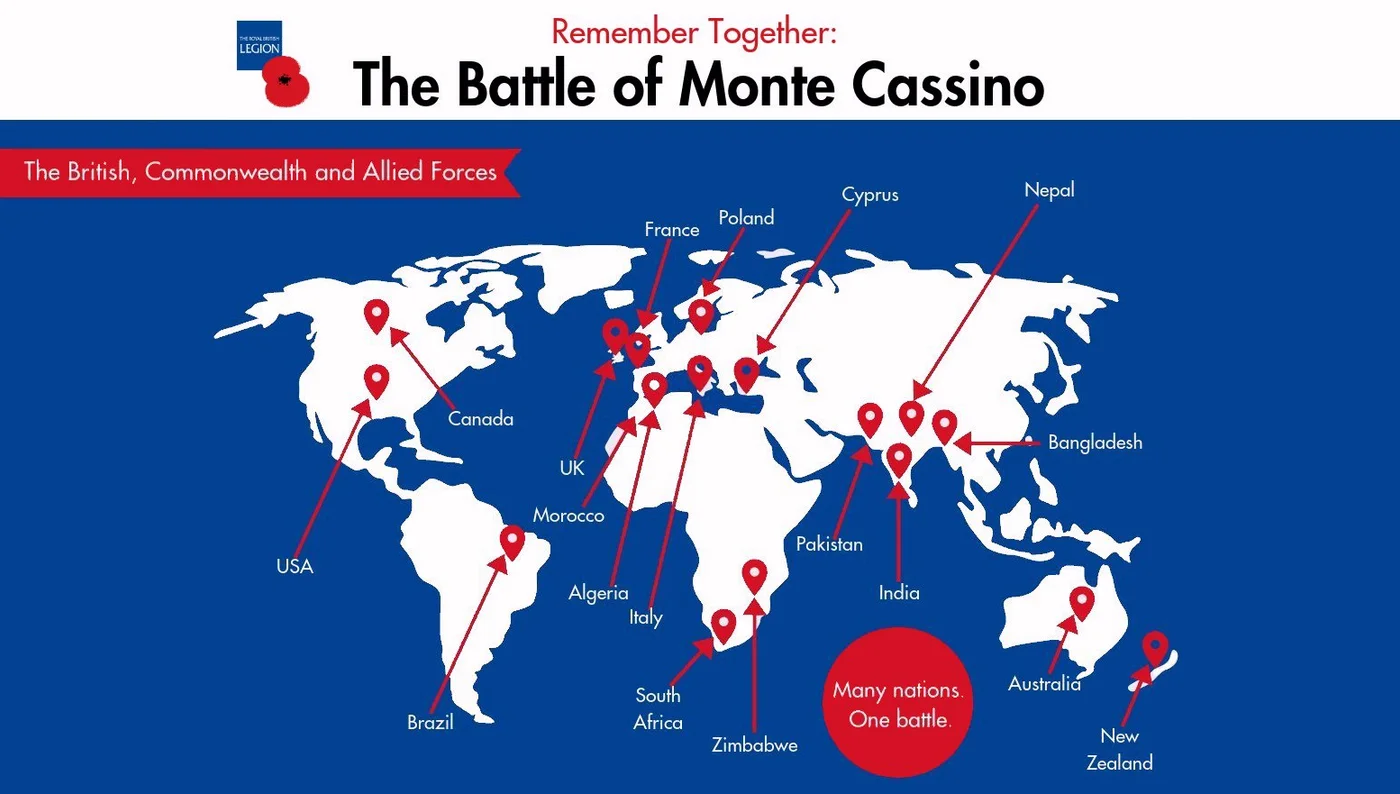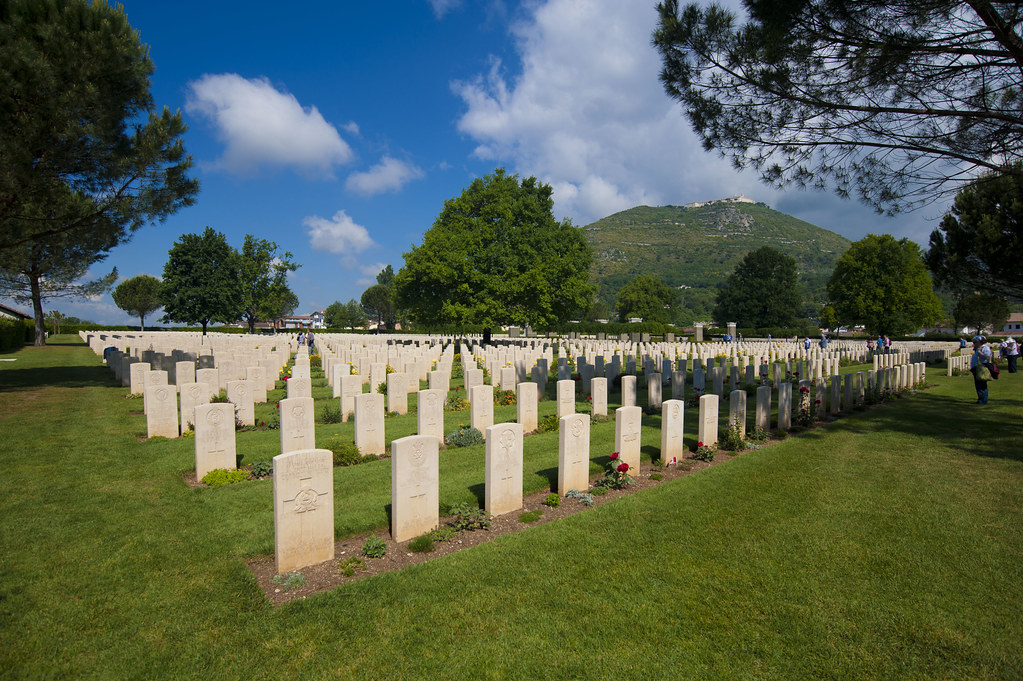
Between January and May 1944 nearly a quarter of a million troops from six continents fought in four battles on and around Monte Cassino and the town of Cassino, Italy.
Churchill had called Monte Cassino the “soft underbelly” of Axis-occupied Europe so no one had predicted that taking Monte Cassino to break Axis defenses would be “The Hardest Fought Battle” of the Second World War.

Monte Cassino was overshadowed by D-Day which happened just two days after the liberation of Rome, which itself was a direct consequence of the Allied victory at Cassino. At the time there was a perception that the Allied armies in Italy were sunning themselves while other theatres were undertaking the `real` fighting of the war.
The men and women serving in Italy were ridiculed as the “D-Day Dodgers”.

Conditions at Cassino
These so-called “D-Day Dodgers” fought in some of the toughest terrain, against a skilled enemy dug-in to the defensive positions along the Gustav Line and did so without the resources available to other theatres. ©IWM (EA 17892)
The forces at Cassino suffered heavy casualties despite their bravery and determination. By the time that Polish troops had captured the summit of Monte Cassino, Allied armies had suffered over 54,000 casualties.

Cemeteries around Cassino
Cassino cemeteries testify not only to the loss of so many but to the mix of nations and forces involved, Britons, pre-partition Indians, Maoris from New Zealand, Poles, Americans, Morrocans and South Africans to name but a few. ©IWM (TR 1802)
The service and sacrifice of the Allies at Monte Cassino is best described by the song of the D-Day Dodgers written by British soldiers. The song finishes:
Look around the hillsides,
Through the mist and rain,
See the scattered crosses,
Some that bear no name.
Heartbreak and toil and suffering gone,
The lads beneath, they slumber on.
They are the D-Day Dodgers,
Who'll stay in Italy.